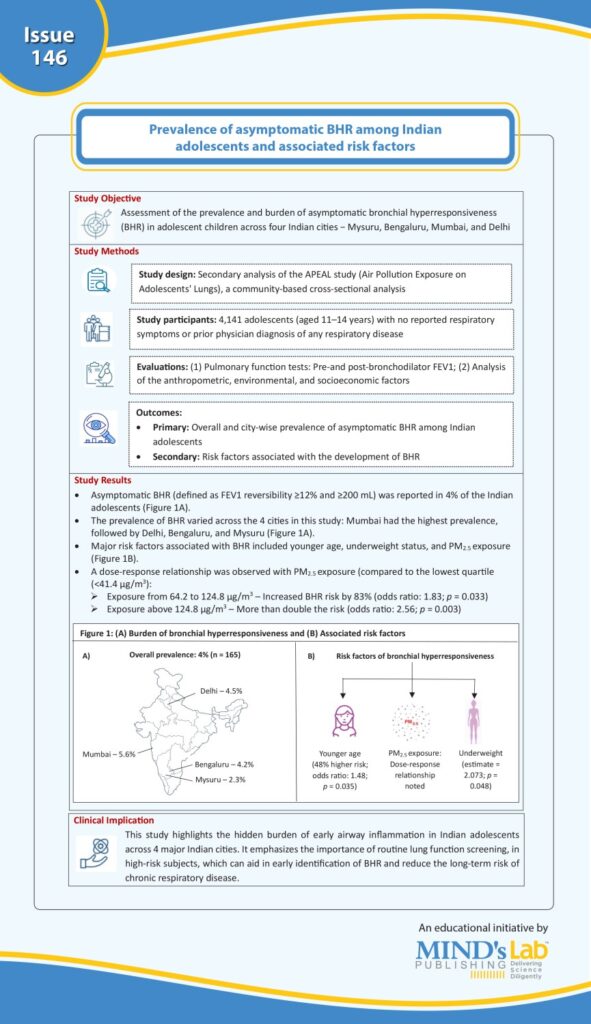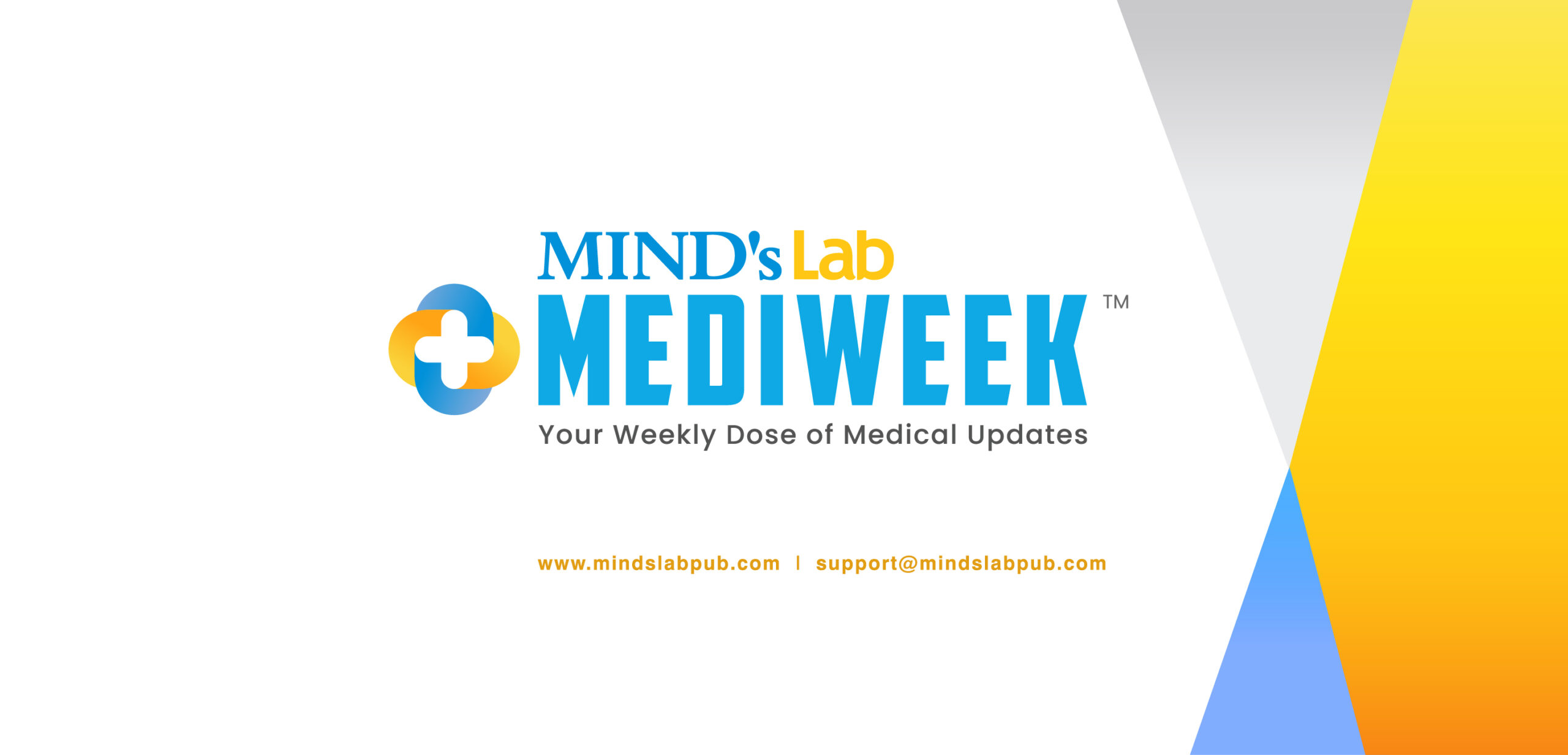
Bronchial hyperresponsiveness (BHR) refers to reversible airway obstruction in response to a stimulus. It is an early marker of airway inflammation and a precursor to chronic respiratory disease such as asthma and chronic obstructive pulmonary disease (COPD).
Fine particulate matter (PM2.5) is a key risk factor associated with increased airway inflammation, allergic sensitization, and the development of BHR, particularly in younger children with developing lungs. Rapid urbanization, environmental pollution, lifestyle changes, and genetic predispositions together contribute to the risk of asthma during childhood.
Bronchial hyperresponsiveness has an established role in asthma and COPD. However, it remains undiagnosed, especially in the absence of respiratory symptoms. Epidemiologic symptom-based screenings can fail in identifying adolescent children not showing the classic symptoms of BHR. This leads to BHR being under-recognized, especially in low- and middle-income countries like India, where environmental exposures are high. Presence of BHR in adolescent children without symptoms can indicate early airway disease, can represent a preclinical stage of asthma, progress to COPD among adults, or represent a different phenotype with independent risk trajectories.
A study by Mahesh et al., published in the journal “Clinical & Experimental Allergy”, aimed to investigate the prevalence of BHR among asymptomatic adolescents across four Indian cities − Mysuru, Bengaluru, Mumbai, and Delhi. The study included 4,141 adolescent children (aged 11–14 years) with no reported respiratory symptoms or prior physician diagnosis of any respiratory disease. A post-bronchodilator increase in forced expiratory volume in 1 second (FEV1) of ≥12% and ≥200 mL was defined as BHR. Asymptomatic BHR was present in 4% of the Indian adolescents, with variation across the cities – 5.6% in Mumbai, 4.5% in Delhi, 4.2% in Bengaluru, and 2.3% in Mysuru. The risk of BHR was greater in younger adolescents and not detectable by symptom-based screening alone. Exposure to particulate matter with a diameter of 2.5 micrometers or less (PM2.5) was a strong risk factor for BHR, which showed a dose-dependent association. Underweight teenagers were at a greater risk of severe airflow limitation (see Graphic).

(Source: Mahesh PA, Kaleem Ullah M, Greeshma MV, Patil S, Samdarshi P, Veerabhadraiah H, Khayum A, Agrawal T, Phuleria HC, D’Souza G, Wellenius G, Nori-Sarma A, Ponnuraj L, Mahadevaswamy SKK, Mayigaiah SC, Thimmulappa RK, Mohan A. Prevalence of asymptomatic bronchial hyperresponsiveness in Indian adolescents: Insights from the APEAL study. Clin Exp Allergy. 2025. Doi: 10.1111/cea.70110)
